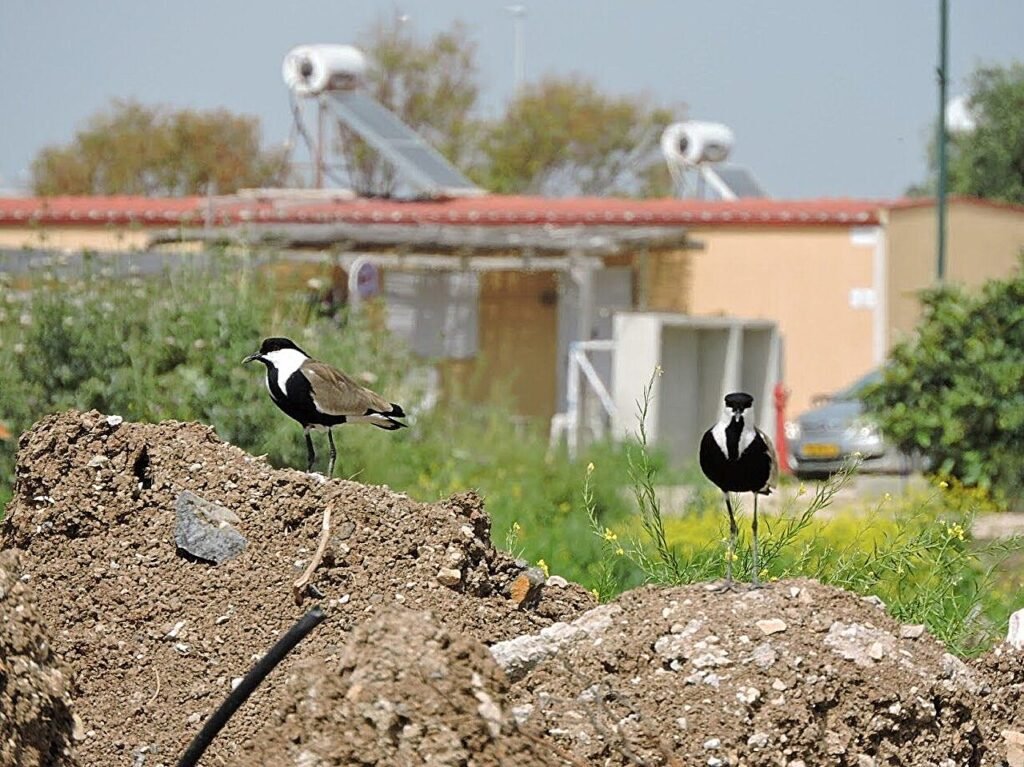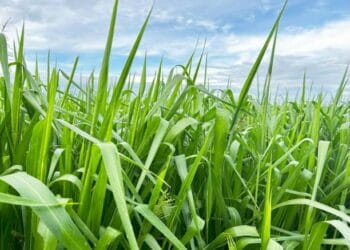Researchers from Tel Aviv University’s School of Zoology have conducted an extensive study on the behavior and movement of the common spur-winged lapwing (Vanellus spinosus) to examine the effects of urbanization on wildlife. This study, recently published in the prestigious Proceedings of the Royal Society B: Biological Sciences, delves into the differences in movement patterns and behavior between “urban lapwings” and their “rural counterparts.”
Introduction to the Study
The study, led by doctoral student Michael Bar-Ziv under the guidance of Professor Orr Spiegel, builds on a series of ongoing research into how urbanization influences the behavior of animals. The study specifically focuses on the spur-winged lapwing, a species known for its adaptability to various environments, including urban settings. In their latest research, the team set out to track these birds in the Beit She’an and Harod Valleys of Israel, an area that includes both human settlements and more natural habitats, such as fishponds and fields.
Bar-Ziv and his colleagues tracked 135 individual lapwings over a period of several months using transmitters that emitted signals every 8 seconds, allowing the researchers to monitor the movement patterns and behavior of the birds. This marked the third major installment in a series of studies dedicated to understanding the effects of human presence on wildlife behavior.
Key Research Goals and Questions
The primary aim of this research was to understand how human presence in urban environments affects the movement patterns and behaviors of the spur-winged lapwings. Specifically, the researchers wanted to compare the mobility of lapwings in human settlements (moshavim and kibbutzim) versus those in more rural settings (fishponds and fields).
Mobility in this context refers to the distance the birds travel on a daily basis, while exploration focuses on whether the birds revisit familiar spots or venture into unfamiliar areas. The study aimed to uncover whether urban living prompted the birds to be more active or curious in terms of exploration compared to their rural counterparts.
Findings: The Effect of Urbanization on Lapwing Mobility
The results of the study were revealing. The researchers discovered that lapwings living in human-populated areas were significantly more mobile than those living in more rural environments. This increased mobility was particularly noticeable during the nesting season, a crucial period for bird behavior. According to Bar-Ziv, urban lapwings were seen flying more often due to the various disturbances that come with living in human settlements, leading to longer flight distances. However, it was important to note that these birds did not venture far from their nests but rather experienced greater movement within the urban spaces themselves.

Interestingly, the researchers also noted that individual lapwings exhibited unique personalities when it came to movement patterns. Some birds were consistently more mobile than others, and these differences in behavior were reflected in distinct spatial patterns over the course of the study. These results suggest that each bird may respond differently to its environment, offering a glimpse into the nuanced nature of animal behavior even within a relatively uniform species.
Exploration Patterns and Gender Differences
In addition to mobility, the study also sought to explore whether the lapwings living in urban areas were more likely to venture into unfamiliar territories. Exploration can be an important indicator of adaptability to changing environments, and the researchers observed complex differences between males and females, especially during the nesting period.
During the nesting season, females in rural environments (fishponds and fields) were found to be more exploratory than those in urban areas, while males exhibited the opposite trend. Males in human settlements were found to explore more compared to their rural counterparts. The researchers did not provide a conclusive explanation for this pattern, although it raises intriguing questions about how environmental factors like urbanization could influence behavior based on sex differences. These observations suggest that exploratory behavior might be influenced by a variety of factors, including seasonal changes and the specific challenges associated with urban and rural environments.
Urban Behavior and “The Town Mouse and Country Mouse” Phenomenon
This study touches on a broader question about how human-made environments influence animal behavior. Often, people focus on animals that seem to adapt well to urban environments—such as rats, pigeons, and sparrows—but may overlook the subtle behavioral changes these animals experience when living alongside humans. Bar-Ziv notes, “We often see birds in populated areas and cities, demonstrating that some species habituate and even flourish in human environments. However, we tend to overlook how human presence affects these animals, altering their behavior—much like the classic story of the ‘town mouse and country mouse.'”
Through their detailed tracking of the spur-winged lapwings, the research team has provided further evidence that, much like in the classic fable, species living in urban environments behave differently than those in more natural settings. In the case of the lapwings, increased mobility and subtle variations in exploration behavior in urban areas suggest a closer alignment with adaptive behaviors to human presence—one of increased alertness and exploration.
Broader Implications for Urban Ecology
Prof. Spiegel, the lead faculty member guiding the study, elaborated on the significance of understanding urban animal behavior. His lab focuses on animal behavior and movement within the framework of conservation and preventing zoonotic diseases—diseases that can spread from animals to humans. Through this lens, the study of urban wildlife behavior is vital for both protecting biodiversity and managing the potential health risks that come with closer interactions between humans and animals.
In their two earlier studies, the researchers had already established that urban lapwings exhibit bolder personalities compared to their rural counterparts. This finding echoed the belief that certain species are more adaptable to urban environments due to changes in personality traits, such as increased boldness and exploratory tendencies. These findings raise important questions about whether individual animals are inherently inclined to live in urban areas, or if it is the environmental conditions that shape their personalities and behaviors over time.
Future Research Directions
While the study has uncovered interesting insights into how urban environments impact the behavior and movement of spur-winged lapwings, the researchers believe that future studies should build on these findings. One of their goals is to investigate how urbanization affects younger animals, particularly chicks, and whether early exposure to urban habitats contributes to the development of behavior traits like boldness or heightened mobility.
Another avenue for future research is understanding the long-term effects of living in an urban habitat, particularly in terms of reproductive success and the ability of urban-adapted individuals to thrive and pass on their behavioral traits to future generations. Such insights would be valuable not only for understanding the adaptive nature of wildlife but also for guiding conservation efforts in rapidly growing urban areas.
Conclusion
The study of spur-winged lapwings in urban and rural habitats provides a fascinating glimpse into the ways in which species adapt to human presence. The increased mobility of urban lapwings during the nesting season and the variations in exploratory behavior underscore the complexities of wildlife adaptation in human-dominated landscapes. Ultimately, this research reminds us that while urban ecosystems are often seen as challenging for wildlife, many species manage to thrive by adapting in unique and unexpected ways.
As human populations continue to grow, understanding how urbanization influences animal behavior is crucial for biodiversity conservation and managing the delicate balance between urban growth and wildlife preservation.
Reference: Michael Bar-Ziv et al, Spur-winged lapwings show spatial behavioural types with different mobility and exploration between urban and rural individuals, Proceedings of the Royal Society B: Biological Sciences (2025). DOI: 10.1098/rspb.2024.2471











